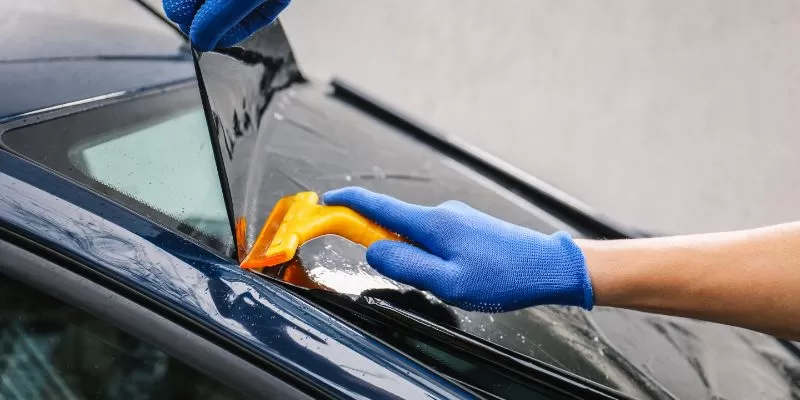Home Window Tinting Laws and Guidelines: What You Need to Know Prior To Tinting Your Vehicle
Prior to continuing with window tinting for your automobile, it is important to acquaint on your own with the varied laws and standards that control this technique across different states. These policies determine the permissible degrees of tint darkness, usually gauged by visible light transmission (VLT) percents, and consist of particular stipulations for front windscreens targeted at guaranteeing road security. In addition, particular territories may use clinical exceptions for people with certifying problems. Understanding these intricacies can conserve you from potential legal implications, but what are the certain guidelines in your state?
Introduction of Window Tinting Rules
Home window tinting legislations are regularly subject to variation across different jurisdictions, mirroring local regulations and safety factors to consider. These regulations dictate the permissible degrees of color darkness and reflectiveness on automobile home windows, guaranteeing that drivers preserve sufficient visibility while additionally shielding versus hazardous UV rays and warm.
Many guidelines categorize home window tinting based on the Visible Light Transmission (VLT) percent, which shows the quantity of light that can go through the home window. Normally, reduced VLT percentages signify darker tints. Laws often set apart in between the front, side, and rear home windows, with more stringent constraints related to the front windshield to enhance safety and security for both the motorist and various other road individuals.
Furthermore, some jurisdictions enforce constraints on the reflectivity of the tint, stopping excessive glare that might impair presence. Exemptions to these regulations may exist for people with certain clinical problems requiring added sunlight security. Compliance with window tinting policies is important, as infractions can lead to penalties, necessary removal of the tint, and possible boosts in insurance policy costs. It is crucial for car owners to acquaint themselves with local laws prior to continuing with window tinting setups.
State-by-State Tint Regulations
Comprehending the details home window tinting policies in each state is important for lorry proprietors looking for to follow the law. Each state in the united state has established its own set of regulations controling window tinting, which can differ substantially. These laws frequently dictate the allowable levels of color darkness, the kinds of windows that can be tinted, and any clinical exceptions that might use.
For instance, states like California have rigid restrictions on color darkness for front windows, while others, such as New Mexico, may allow darker colors. Furthermore, particular states mandate details exposure portions for numerous windows, including the windshield, front side home windows, and back home windows. It is important for automobile proprietors to familiarize themselves with their state's legislations to avoid possible fines or fines.
Additionally, some states may require a certification sticker to be positioned on tinted windows, indicating conformity with state legislations. Failing to stick to these guidelines not only runs the risk of legal effects but can also influence safety and exposure while driving. Vehicle proprietors ought to perform detailed research study or get in touch with regional authorities to make certain complete understanding and compliance with state-by-state tint laws.
Allowed Color Types and degrees
Several vehicle owners might be amazed to learn that allowed tint levels and types differ extensively throughout different states. Each state has actually developed its very own laws relating to the allowable darkness and reflectivity of window tint, typically determined by Visible Light Transmission (VLT) portions. VLT refers to the amount of light that can pass through the colored home windows; therefore, a reduced portion indicates a darker tint.

Additionally, the sorts of tint products allowed can differ, with some states forbiding mirror-like or metallic coatings. It is crucial for car proprietors to familiarize themselves with their state's specific legislations to ensure conformity. Non-compliance can cause fines, necessary removal of the color, or various other lawful effects, making it crucial to comprehend these guidelines prior to proceeding with setup.
Medical Exceptions for Tinting
While not all states provide allocations for medical exemptions relating to window tinting, those that do acknowledge the requirement for details people to boost exposure and convenience because of medical problems. Numerous medical conditions, such as lupus, skin cancer cells, and particular eye conditions, can make people specifically sensitive to sunlight. Subsequently, these people might require darker colors to secure themselves from dangerous UV rays and glare.

It is vital to keep in mind that despite having a clinical exception, there may still be constraints on the degree of tint enabled. Compliance with state laws makes sure that individuals are both secured and within legal limits. Those taking into consideration medical exemptions must call their regional Division of Electric motor Automobiles or equivalent authority to recognize the demands and procedures needed to request an exception effectively.
Fines for Non-Compliance
Stopping working to abide with home window tinting regulations can lead to significant fines, which vary by state. Police are equipped to provide citations for lorries that do not adhere to the defined tinting guidelines. These penalties normally consist of fines, which can range from modest amounts to a number of hundred bucks, depending upon the seriousness of the infraction and the state in question.
In some territories, repeated offenses might result in rising penalties or extra penalties, such as compulsory court appearances. Moreover, non-compliance may necessitate the removal of prohibited tinting, frequently at the owner's expenditure. In extreme cases, habitual wrongdoers may face suspension of their automobile registration till compliance is attained.
In addition, insurance coverage ramifications may occur from obtaining multiple citations for home window color violations. Insurance firms might view such infractions as an indicator of riskier behavior, possibly leading to boosted premiums look at more info or problem in protection.
To avoid these penalties, it is vital for automobile proprietors to acquaint themselves with their neighborhood window tinting regulations and make certain that their car complies (Window Tinting). This aggressive approach not just avoids lawful implications but also promotes roadway safety and security
Final Thought

Most regulations categorize window tinting based on the Visible Light Transmission moved here (VLT) portion, which shows the amount of light that can pass through the window. Conformity with home window tinting guidelines is vital, as offenses can result in fines, compulsory removal of the color, and potential rises in insurance policy costs.Comprehending the specific window tinting guidelines in each state is crucial for automobile proprietors seeking to comply with the law. These regulations often determine the permitted degrees of color darkness, the types of windows that can be tinted, and any clinical exceptions that might use.
For circumstances, states like California have rigorous restrictions on tint darkness for front home windows, while others, such as New Mexico, might permit darker tints.
 Tia Carrere Then & Now!
Tia Carrere Then & Now! Michael Oliver Then & Now!
Michael Oliver Then & Now! Marla Sokoloff Then & Now!
Marla Sokoloff Then & Now! Lacey Chabert Then & Now!
Lacey Chabert Then & Now! The Olsen Twins Then & Now!
The Olsen Twins Then & Now!